Mantel Restoration
Mantlels have always been a significant architectural centerpiece for historic homes. They provide the framework for the hearth which was of central importance to historic life and can be considered the essence of what home has meant to humanity. Often they are unique, artistically inspired designs based on styles representative of the period in which they were created. The hearth itself has been an evolving mechanism for heating and cooking that requires periodic maintenance and an understanding of how the fire was meant to be controlled.
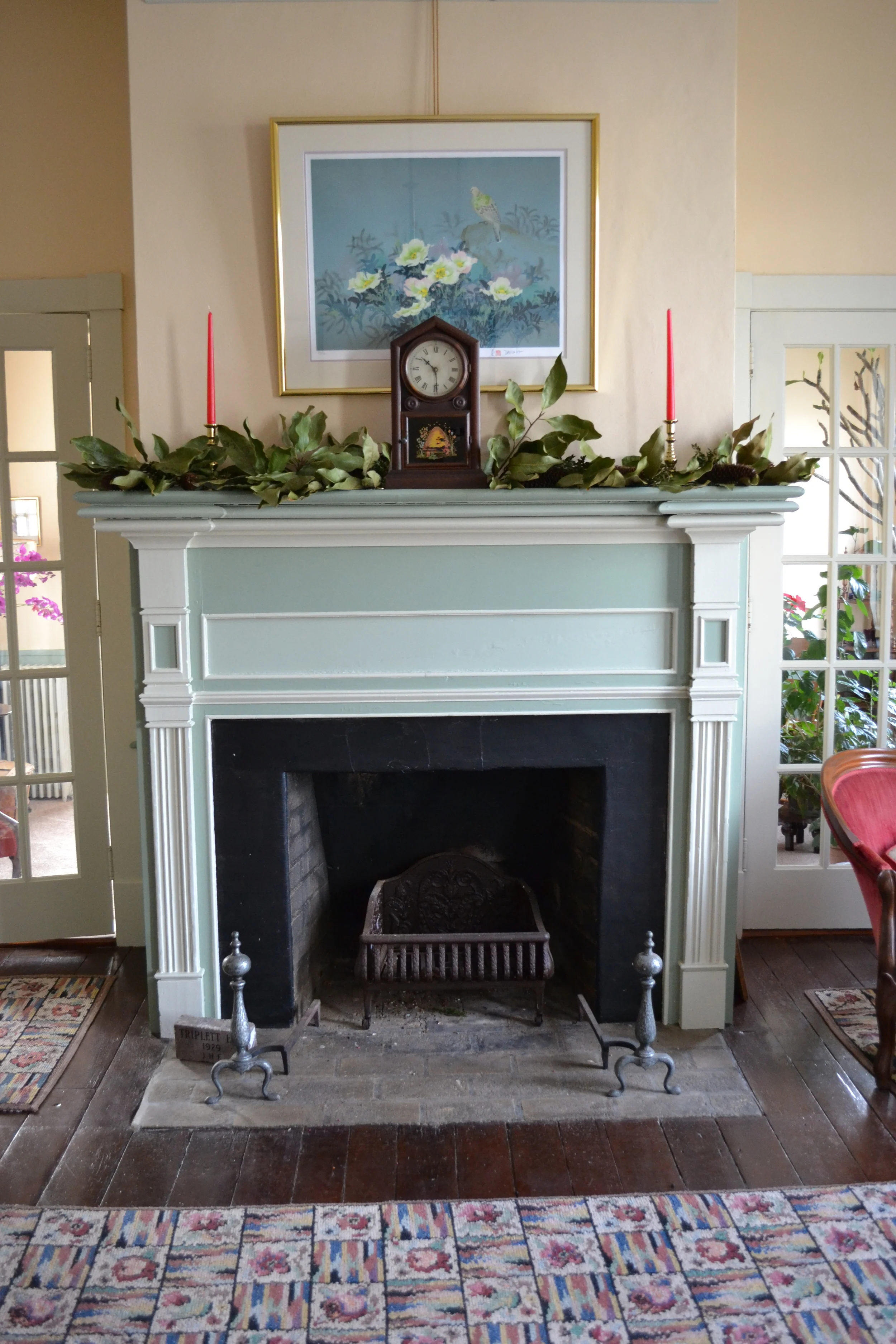
Pennybacker House, 1805 - Mt Jackson, Va
One of the few original mantels to survive the Greek Revival renovation of the Pennybacker House in the mid-nineteenth century. Four color shades were used to highlight the delicate detailing of the federal style
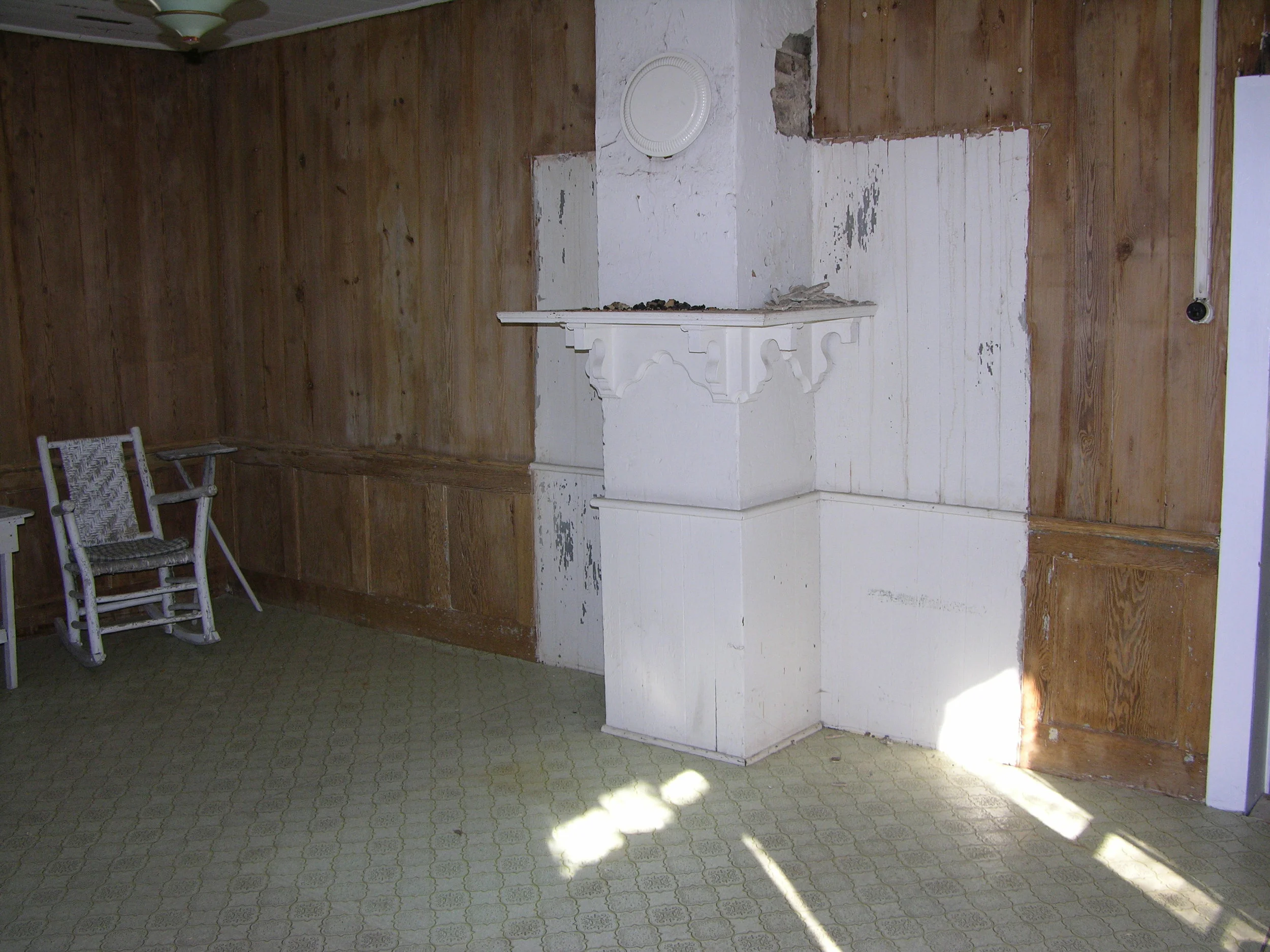
Grandstaff House 1789 - Edinburg, Va
The original chimney and mantle had been removed in a nineteenth century renovation and replaced with a wood stove flue. Vertical tongue and groove boards outlined where the original mantle once existed.
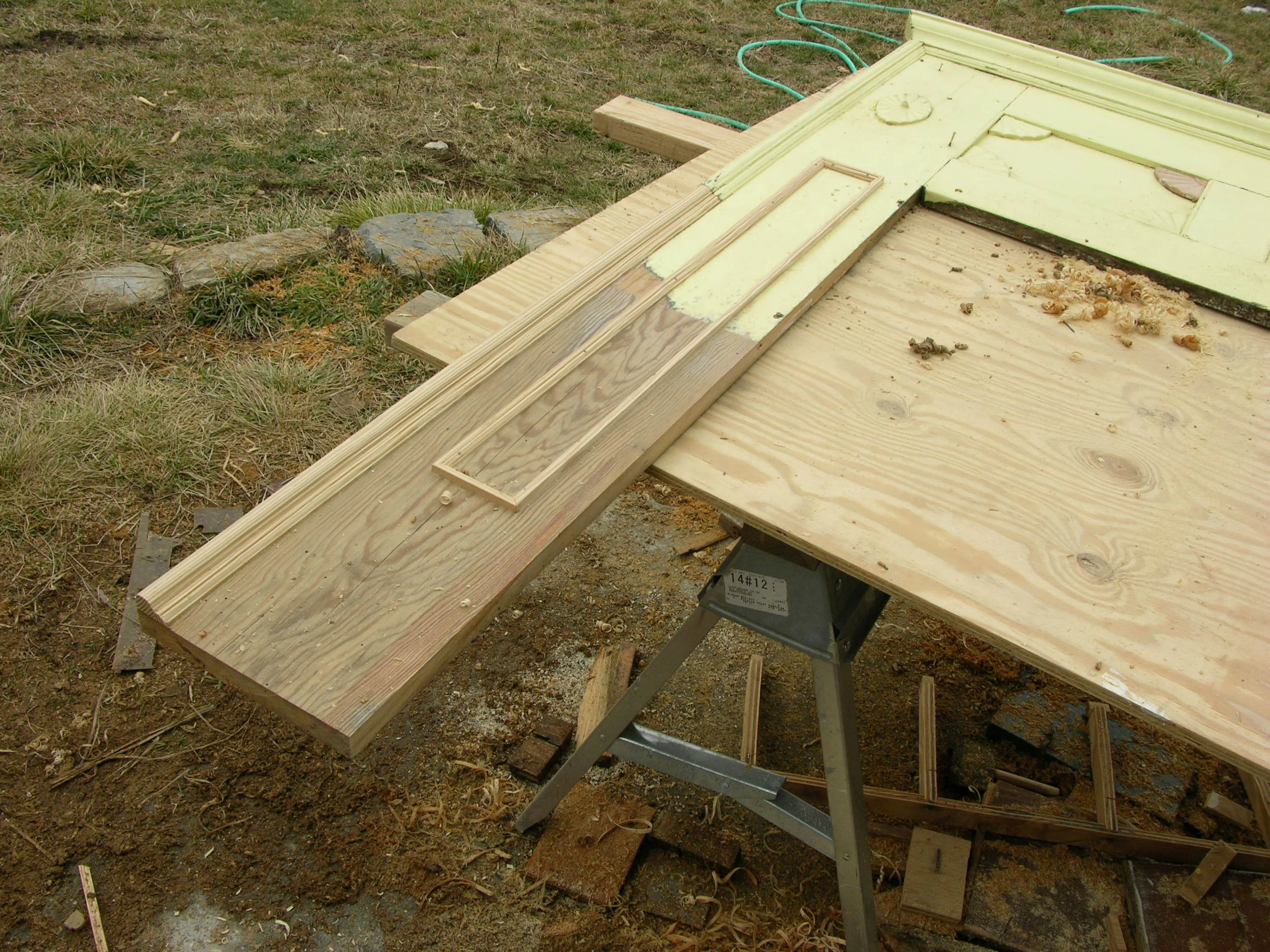
Grandstaff Mantel
The original mantel was located underneath a staircase but had unfortunately been cut down. 200 year old heartwood pine was spliced in to replace the missing length. Custom molding was milled and a fan design was carved to match the original design. Paint was later removed to reveal the earliest Federal blue color scheme.

Grandstaff House
The restored woodwork was finished with milk paint, the walls with shellac, and the restored floor with varnish. Because a nineteenth century kitchen addition existed where the initial stone chimney had been, a local folk artist painted a design to fill the hearth area. A stone was used to represent the location of the old flue.

Wine House, c. 1800, Quicksburg, Va
Paint and firebrick covered much of the original detail of the early and unique mantel.

Wine house mantel
Paint was carefully removed from the mantel to allow traces of the intricate original color scheme to survive. Clear de-waxed shellac was applied to protect these details. The original keystone had been cracked and, in turn, stressed the iron lintel below. Several courses of stonework above the lintel were removed and relaid with a new keystone and lintel. Brick was replaced and the back was sacrificially parged. A cast iron fireback is used to protect the chimney stone.

Munch House Parlor Mantle, 1834 - Fort Valley
A rare and unique original paint scheme still survives on this early mantle. Here we restored the masonry and plaster in the hearth as well as through out the room. The decorative paint was reproduced where necessary.
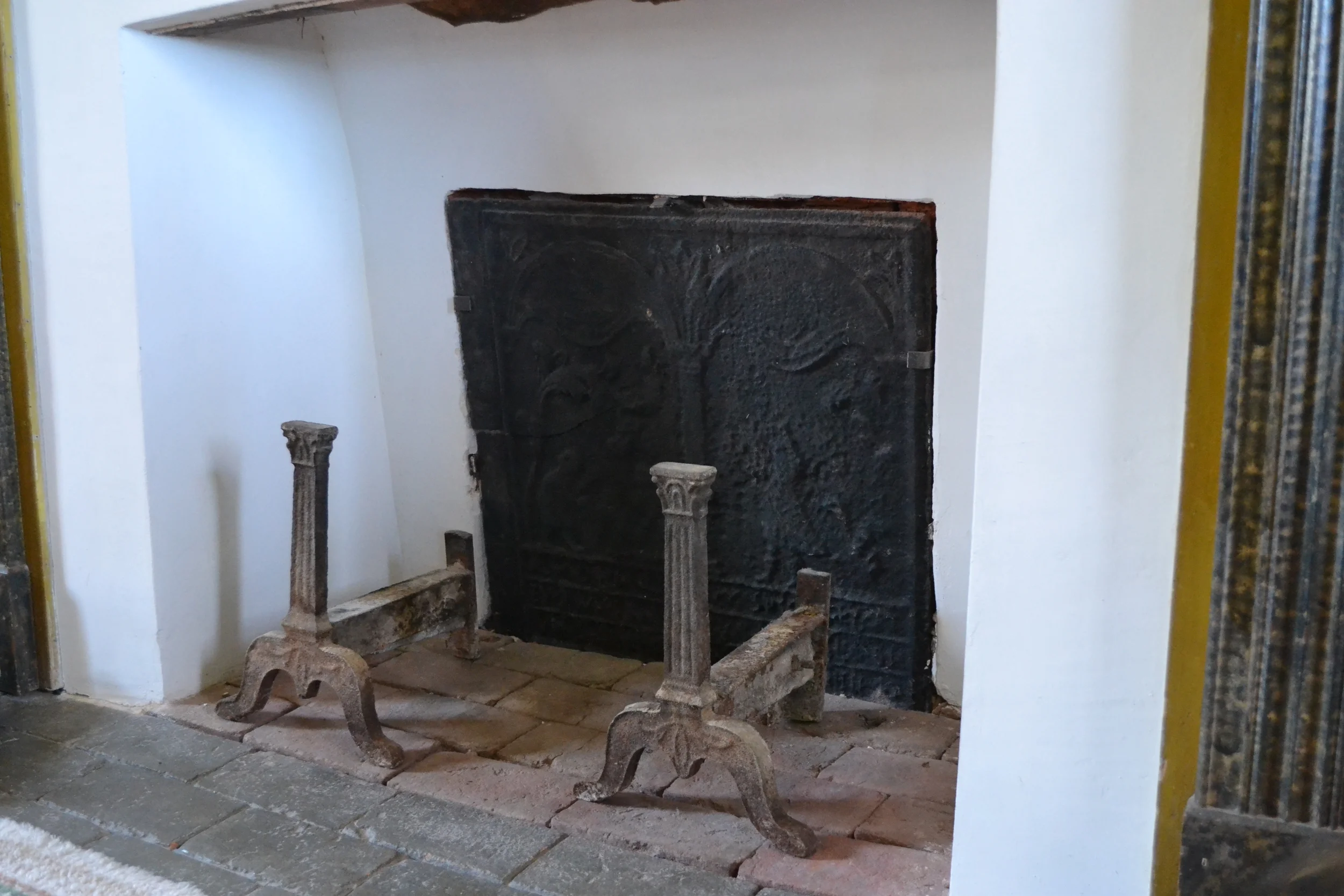
Munch house fire back - early 18th century
An interesting find that we uncovered during the restoration was this early German fire back from Pennsylvania. When we removed the iron from the masonry we found that the back side had a casting of a biblical scene and German writing. We cleaned the metal and flipped it around. Research was done and it was discovered that it was cast in the early 1700's. Later we found a match to it in another fireplace in an adjacent room.
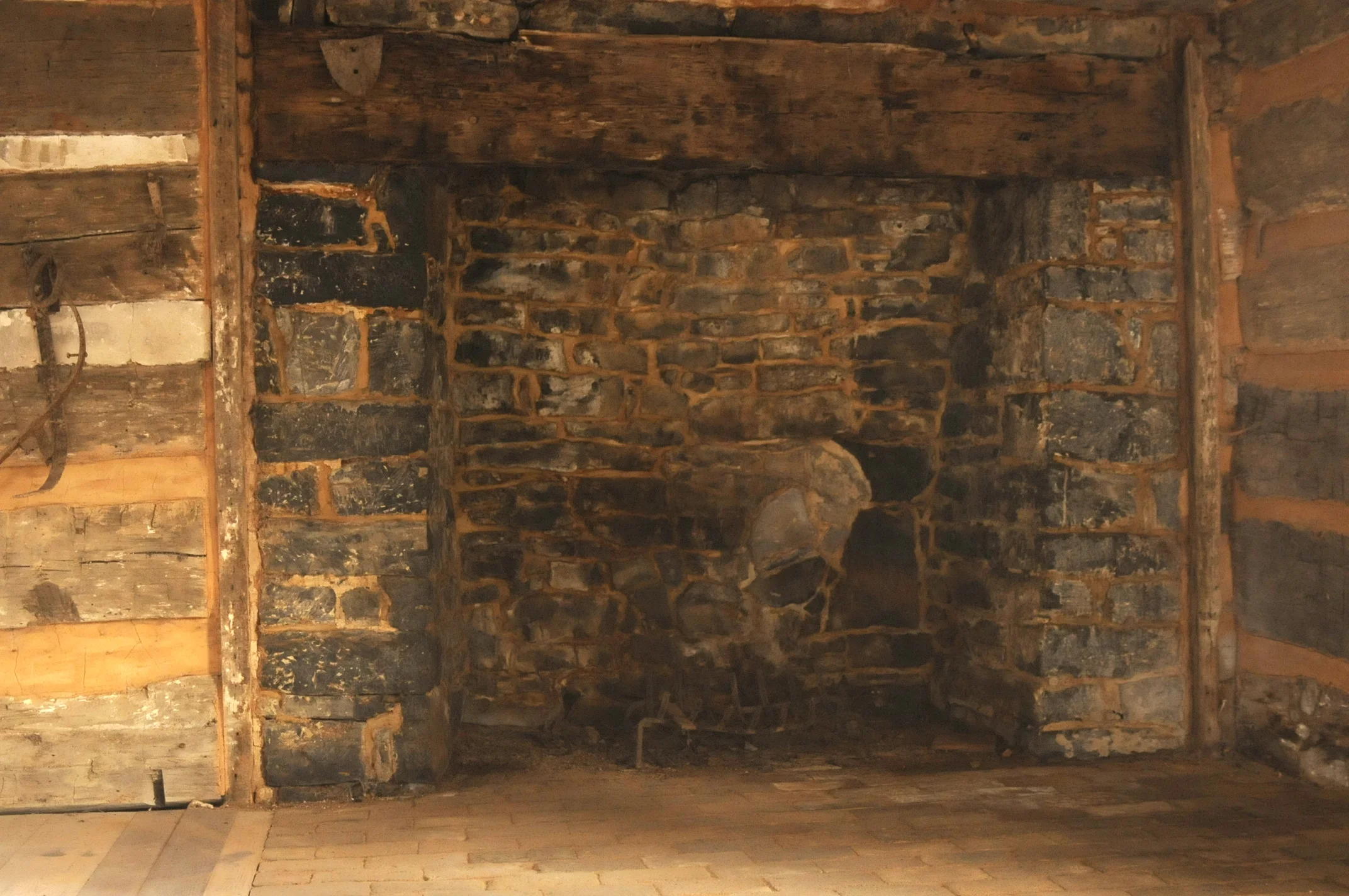
Showalter Mantel
An example of a very early rustic walk in cooking style hearth. Here the stone back was relaid and pointed with hydraulic lime mortar. Antique bricks expand out into the room.
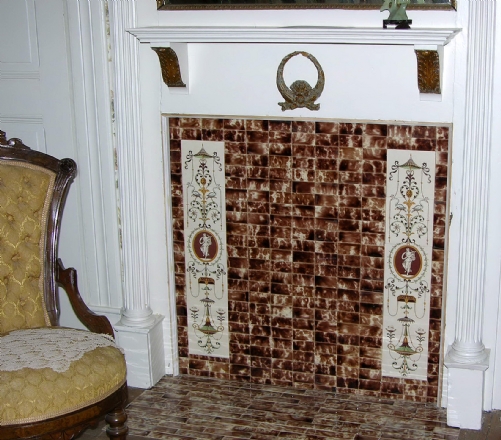
Tile
This Victorian hearth in Strasburg, Va had been bricked off years before to improve energy efficiency. Here we added a decorative tile treatment with victorian tiles that were found in the attic - probably removed from the house in an earlier renovation.

Bowman House
Adella Watkinson applying finishing touches to a parge coat inside this Greek revival style mantel. The decorative painting is an early Germanic style.